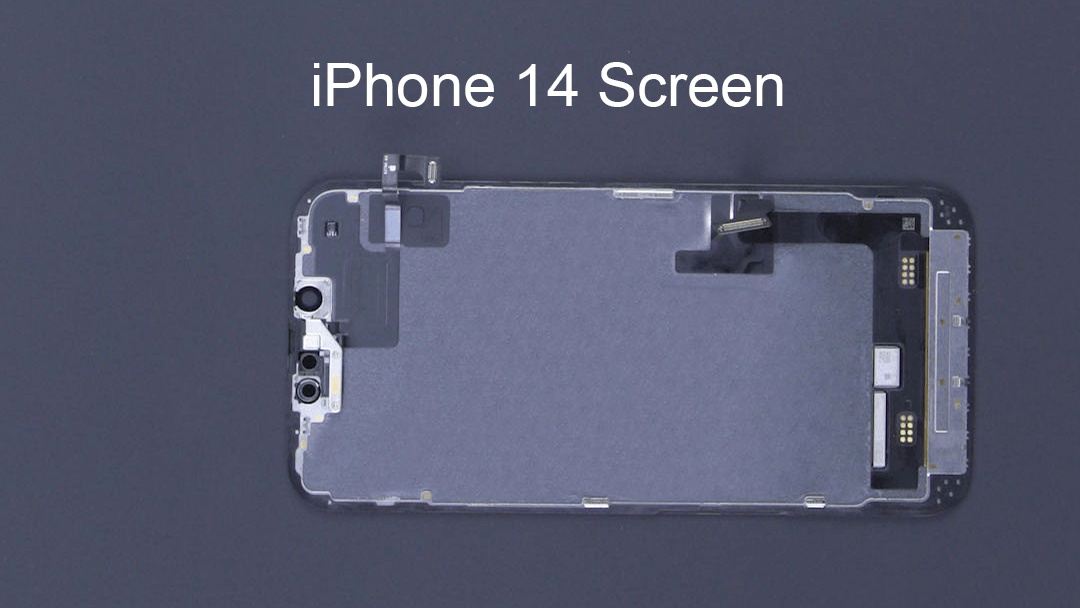The Evolution of Cell Phone Displays: From Brick Phones to Foldable Screens

The evolution of cell phone displays has come a long way since the first brick phones were introduced in 1983. As technology advances, so do our cell phone screens. From introducing color displays to high-resolution screens, we’ve seen rapid growth in the mobile phone industry. More recently, foldable screens are becoming the new norm and every cell phone brand is introducing foldable phones. In this article, we’ll discuss the evolution of cell phone displays and how they’ve changed over the years. We’ll dive into the different types of cell phone screens that have been introduced to the market and how they’ve impacted how we interact with our mobile devices. Whether you’re a tech enthusiast or just curious about the history of cell phone displays, you won’t want to miss this article.
Introduction to cell phone displays
The display is one of the most important features of any cell phone, as it’s the primary way we interact with our devices. Cell phone displays have come a long way since the days of the brick phone. From simple monochrome screens to foldable displays, the evolution of cell phone displays has been a fascinating journey. Today, we have access to high-definition screens, touchscreens, and even foldable screens that can be used as a phone or a tablet. As technology continues to advance, we can expect to see even more innovations in cell phone displays in the coming years.
The early days of cell phone displays
In the early days of cell phones, the displays were small and had limited capabilities. The first cell phones had monochrome displays that could only show a few lines of text at a time. These displays were typically one inch or smaller in size and were usually only capable of displaying a few characters at a time. As technology advanced, the displays began to evolve. In the late 1990s, color displays were introduced, and cell phones started to look more like small handheld computers. The displays were still relatively small, but they were capable of showing more information, including graphics and photos. As the early 2000s rolled around, cell phone displays continued to evolve at a rapid pace. Manufacturers began experimenting with larger displays that were capable of showing more information at once. These larger displays made it easier to navigate menus, send text messages, and browse the internet. While the early days of cell phone displays were limited, they laid the foundation for the incredible technology we have today.
Introduction of color displays and touch screens
The introduction of color displays and touch screens was the first major milestone in the evolution of cell phone displays. Before color displays, cell phone screens were limited to monochrome displays that only showed text and simple graphics. The introduction of color displays in the early 2000s revolutionized the mobile phone industry. Suddenly, phones could display vibrant and colorful images, making mobile gaming and multimedia experiences much more enjoyable. The introduction of touch screens was another significant leap forward. Touch screens allow for more intuitive and interactive user interfaces, making it easier to navigate through menus and use different features on the phone. Together, these two innovations changed the way we interact with our phones and paved the way for further advancements in cell phone display technology.
High-resolution screens and bezel-less displays
One of the biggest improvements in cell phone displays over the years has been the development of high-resolution screens and bezel-less displays. In the past, cell phone screens were often small, with low resolution and thick borders, or bezels, around the edges. But now, cell phone manufacturers are using advanced technology to create larger screens with higher resolution and minimal bezels. This means that users can now enjoy stunning visuals and more screen real estate in a compact form factor. With high-resolution screens, you can see every detail in images and videos, making for a more immersive experience. It also makes reading and browsing the internet easier on the eyes, as text and images are sharper and clearer. Bezel-less displays have become a popular trend in recent years, as they offer a sleek and modern look to cell phones. By minimizing the borders around the screen, manufacturers are able to fit larger screens into smaller frames. This not only gives users more screen space but also makes the phone more comfortable to hold and use with one hand. Overall, high-resolution screens and bezel-less displays have revolutionized the way we use and interact with cell phones. They have made our screens clearer, larger, and more immersive, while also giving our devices a more modern and stylish look.
Foldable screens
Foldable screens are the latest innovation in the evolution of cell phone displays. This technology allows phone screens to fold in half, making them more portable and easier to carry around. Foldable screens are creating a buzz in the phone industry, and many companies are investing in them.
Foldable screens are made up of a thin layer of organic material that can be folded multiple times without breaking. This technology is still in its early stages, and the cost of foldable screens is still high. However, it is expected that the price will decrease as the technology becomes more advanced and widespread.
The main advantage of foldable screens is that they provide a larger screen size while maintaining the portability of a smaller phone. They also offer new ways to use a phone, such as using one side of the screen for one app and the other side for another app. This feature has the potential to make multitasking much easier. Foldable screens have also created new design opportunities for phone manufacturers. With a foldable screen, a phone can look and function like a traditional phone when it's folded, but it can transform into a tablet-like device when it's unfolded. This opens up a range of possibilities for app developers to create new apps that take advantage of the larger screen size.
Future of cell phone displays
The future of cell phone displays is looking bright with new technologies emerging every year. One of the most exciting developments in recent years is the foldable screen. Foldable screens are already available on some high-end phones, but it is expected that they will become more common in the future.
Another development that is expected to become more popular is the use of holographic displays. This technology projects a three-dimensional image on the screen, providing a more immersive experience for the user.
Another exciting development is the use of flexible screens. These screens can be bent and twisted without breaking, allowing for new form factors for cell phones. With the rise of 5G technology, we can expect to see higher resolution displays and faster refresh rates, providing a smoother and more responsive user experience.
Conclusion
The evolution of cell phone displays has been a remarkable journey, taking us from the days of brick phones and tiny monochrome screens to the foldable screens that we see today. The advancements in technology have revolutionized the way we interact with our phones, making them an essential part of our lives. We can now enjoy bigger, brighter, and more colorful screens, with higher resolutions and pixel densities.
We have seen the rise of touch screens, and the introduction of new technologies such as AMOLED and OLED displays. And now, with the advent of foldable screens, we are entering a new era of mobile technology where the possibilities are endless. We have come a long way from the early days of cell phones, and it’s amazing to see where we are today. It’s exciting to think about what the future of mobile technology will bring, and what kind of displays we will be using in the years to come. One thing is for sure, the evolution of cell phone displays is far from over, and we can’t wait to see where it takes us next!
In case you have found a mistake in the text, please send a message to the author by selecting the mistake and pressing Ctrl-Enter.
You must be logged in to comment.
Sign In /
Sign Up


No comments yet